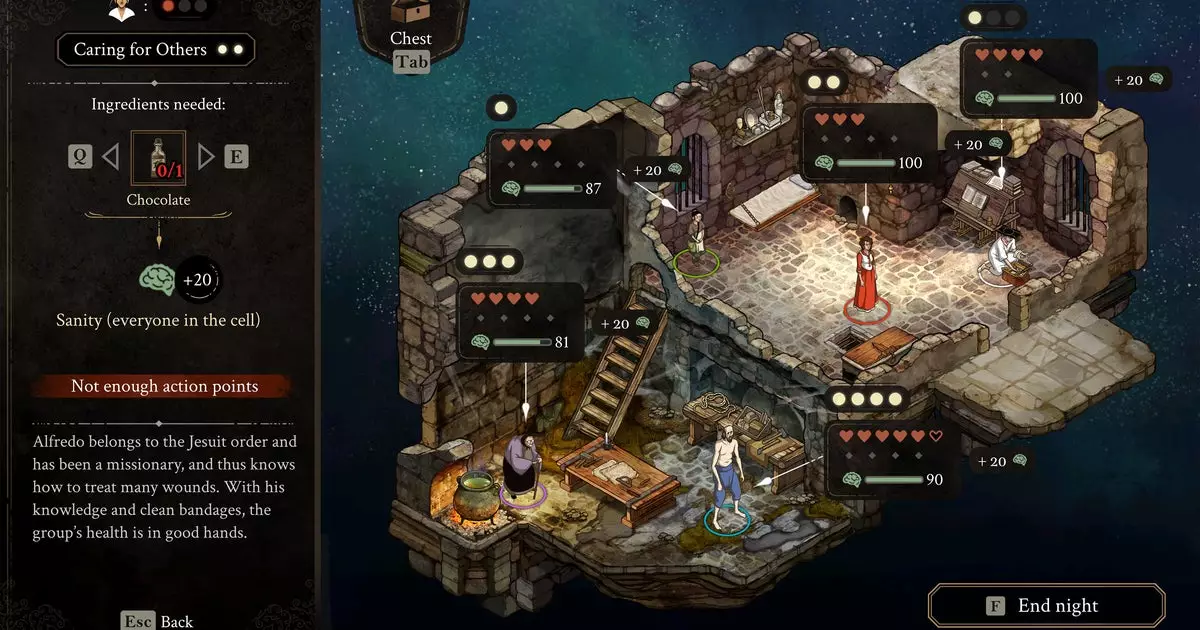The highly anticipated release of The Game Kitchen’s latest title, The Stone Of Madness, invites players into a chilling world of isometric tactical stealth gameplay set within the eerie confines of an 18th-century monastery. This game transcends the typical genre label by weaving a rich narrative infused with psychological elements and a haunting atmosphere. Unlike other tactical games that merely focus on mechanics, The Stone Of Madness engages players in a profound exploration of character mentalities, offering a fresh take that reflects the turmoil experienced by its ensemble cast.
At the heart of The Stone Of Madness lies a diverse group of characters, each crafted with unique skills, strengths, and profound flaws. A stark departure from the more straightforward character frameworks seen in games like Commandos, this title introduces sanity bars that measure the psychological stability of each character. This feature not only enriches the gameplay but also delves into mental health themes, as characters can develop new phobias and weaknesses, responding dynamically to the challenges presented by the relentless monastic environment. This nuanced approach to character development adds depth, prompting players to not only strategize around their abilities but also navigate their psychological deterioration through the lens of a harrowing narrative.
Monastic Influence: Foucault and Timekeeping
A particularly compelling aspect of The Stone Of Madness relates to the historical significance of monastic timekeeping. Philosopher Michel Foucault’s insights into how monastic orders shaped modern conceptions of time serve as a valuable context for understanding the game’s structure. In his work, Discipline And Punish, Foucault illustrates how the rituals practiced in monasteries led to a meticulous rhythm of daily life, ultimately influencing broader societal frameworks such as industrial labor. The Stone Of Madness harnesses this concept, integrating an intricate day-night cycle that governs the gameplay dynamics, compelling players to align character choices with various temporal phases to maximize their effectiveness.
An Artistic Connection with Literary Roots
Notably, The Stone Of Madness draws inspiration from previous works within the genre, particularly referencing the classic game The Abbey Of Crime, a loose adaptation of Umberto Eco’s rich novel The Name Of The Rose. This literary connection interlaces depth and complexity into the gameplay, forging a bridge between gaming and literature that invites players to become more than mere participants—they are, instead, interpreters of an evolving narrative filled with existential themes.
With its combination of strategic depth, psychological nuance, and historical context, The Stone Of Madness stands as a promising addition to the gaming world. It provokes intriguing questions about the nature of time within gameplay and challenges conventional perceptions of what defines a video game. As I ponder the implications of monastic influence on both this title and the broader gaming landscape, I find myself excited by the potential for future exploration and discussion. This layered experience is an endeavor worth pursuing, and I am eager to plunge deeper into the fascinating gameplay it offers.

